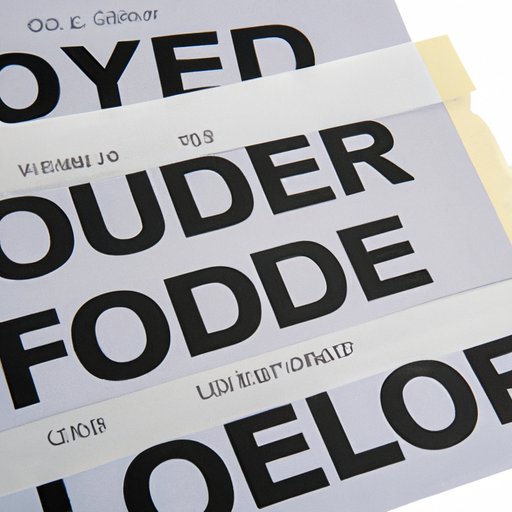
I. Introduction
Cashing a money order can be a convenient and secure way to get access to cash, pay bills, or transfer money without using a traditional bank account. However, it’s important to understand the basic steps involved, as well as the different options and risks associated with cashing a money order. This article aims to provide a beginner’s guide to cashing a money order, exploring your options, preventing fraud, and maximizing your funds.
II. A Beginner’s Guide to Cashing a Money Order: What You Need to Know
A money order is a type of prepaid paper document that serves as a substitute for cash or personal checks. It is typically used for transactions that require a more secure form of payment than cash, such as paying rent, sending money to a friend or family member, or making a purchase online. To cash a money order, you need to endorse it by signing the back, provide a valid identification that matches the name on the money order, and fill out a form that includes your name, address, and amount of money. Depending on the location and amount of the money order, you may also need to pay a fee, provide additional documents, or wait for a verification process.
III. Exploring Your Options: Where to Cash a Money Order and the Pros and Cons
There are several different places where someone can cash a money order, each with its own advantages and disadvantages. Banks and credit unions tend to offer the most security and reliability, but they can also be more strict with their policies regarding fees and limits. Post offices are another popular option, especially for smaller amounts, but they may have longer lines and limited hours of operation. Retail stores and check cashing services are more flexible in terms of location and convenience, but they may charge higher fees or have a higher risk of fraud. When choosing where to cash a money order, it’s important to consider factors such as cost, availability, speed, and customer service.
IV. Fraud Prevention: How to Check If Your Money Order is Legitimate Before Cashing
Fraud is a common risk associated with cashing money orders, as scammers can easily create fake ones or alter existing ones to their advantage. To avoid falling victim to a fraud scheme, it’s important to know how to check if your money order is legitimate before cashing it. Some common red flags include missing watermarks, incorrect or mismatched names or amounts, or unusual sender information. To verify the authenticity of a money order, you can contact the issuing company or compare it to a sample. If you suspect that a money order is fake or stolen, do not attempt to cash it and report it to the authorities instead.
V. Maximizing Your Money Order: Creative Ways to Use the Funds
Once you have successfully cashed a money order, there are many ways to use the funds to your advantage. Some popular options include paying off bills or debts, buying groceries or other essential items, making a charitable donation, or investing in a small business opportunity. To make the most of your money order funds, consider budgeting them wisely, saving them for future expenses, or earning interest on them through a savings account or other investment option. Remember that the money is yours to use responsibly, so choose wisely.
VI. Lost or Stolen Money Order: What to Do Next
If you discover that your money order is lost or stolen, it’s important to take immediate action to minimize the damage and maximize the chances of recovery. Start by filling out a form that includes the details of the money order, such as the amount, date, and location of issue. Then, contact the issuing company or bank to inform them of the situation and ask for assistance in cancelling the money order and getting a refund or replacement. You may also want to report the incident to the police, especially if you suspect fraud or theft. To avoid losing money orders in the future, consider using a secure mailbox or tracking the delivery process to ensure safe receipt.
VII. Conclusion
Cashing a money order can be a useful and practical way to handle financial transactions, but it can also be risky if not done properly. By following the basic steps outlined in this article, you can ensure that you cash your money order safely and legally, explore all your options, prevent fraud, and maximize your funds. If you have any additional tips or experiences to share, feel free to leave a comment below and join the conversation.




